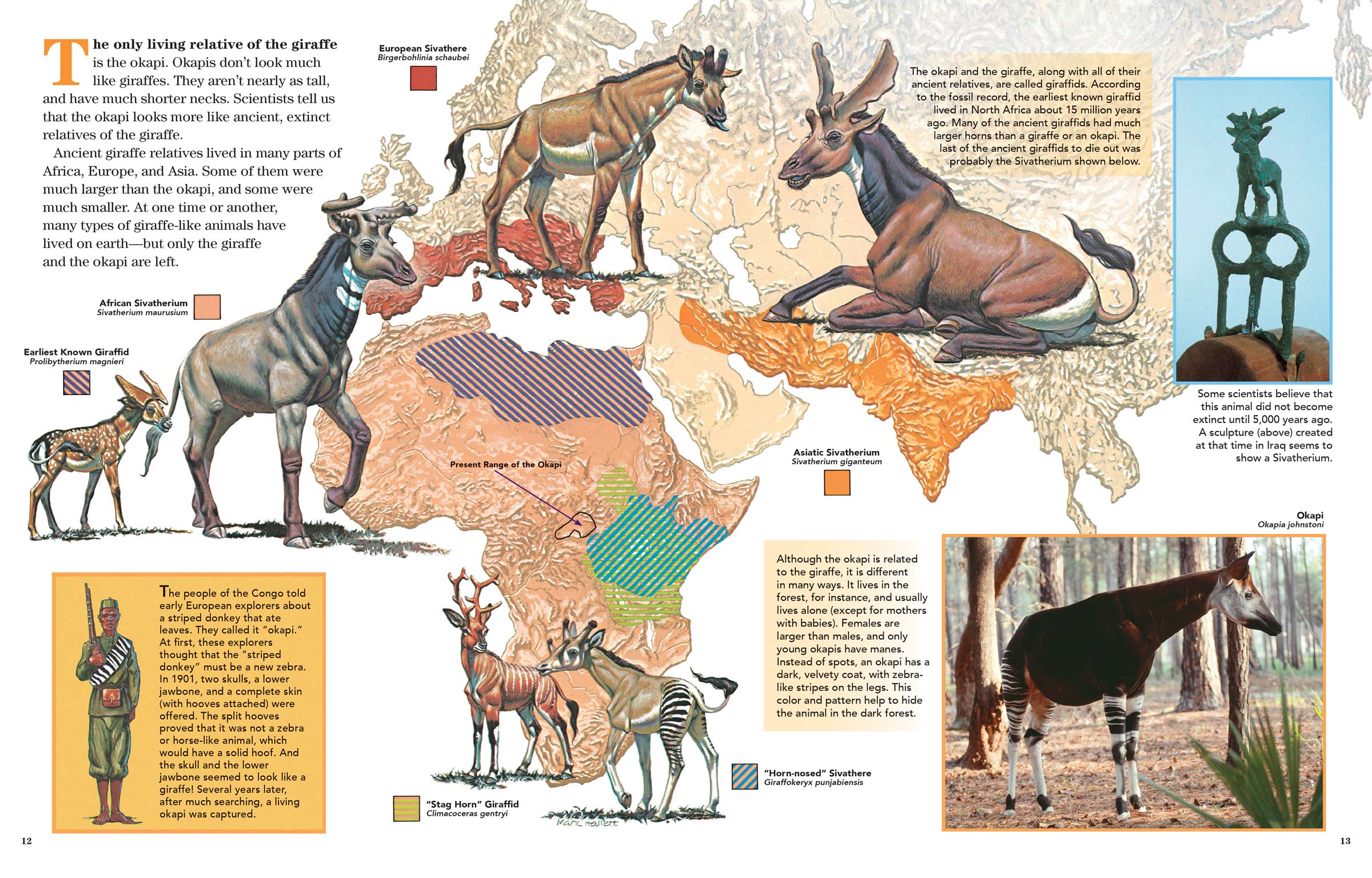
Early Giraffes
ByThe only living relative of the giraffe is the okapi. Okapis don’t look much like giraffes. They aren’t nearly as tall, and have a much shorter necks. Scientists tell us that the okapi looks more like ancient, extinct relatives of the giraffe.
Ancient giraffe relatives lived in many parts of Africa, Europe, and Asia. Some of them were much larger than the okapi, and some were much smaller. At one time or another, many types of giraffe-like animals have lived on earth—but only the giraffe and the okapi are left.
The people of the Congo told early European explorers about a striped donkey that ate leaves. They called it “okapi.” At first, these explorers thought that the “striped donkey” must be a new zebra. In 1901, two skulls, a lower jawbone, and a complete skin (with hooves attached) were offered. The split hooves proved that it was not a zebra or horse-like animal, which would have a solid hoof. And the skull and the lower jawbone seemed to look like a giraffe! Several years later, after much searching, a living okapi was captured.
 The okapi and the giraffe, along with all of their ancient relatives, are called giraffids. According to the fossil record, the earliest known giraffid lived in North Africa about 15 million years ago. Many of the ancient giraffids had much larger horns than a giraffe or an okapi. The last of the ancient giraffids to die out was probably the Sivatherium shown at left.
The okapi and the giraffe, along with all of their ancient relatives, are called giraffids. According to the fossil record, the earliest known giraffid lived in North Africa about 15 million years ago. Many of the ancient giraffids had much larger horns than a giraffe or an okapi. The last of the ancient giraffids to die out was probably the Sivatherium shown at left.
Some scientists believe that this animal did not become extinct until 5,000 years ago. A sculpture (above) created at that time in Iraq seems to show a Sivatherium.
Although the okapi is related to the giraffe, it is different in many ways. It lives in the forest, for instance, and usually lives alone (except for mothers with babies). Females are larger than males, and only young okapis have manes. Instead of spots, an okapi has a dark, velvety coat, with zebra-like stripes on the legs. This color and pattern help to hide the animal in the dark forest.

